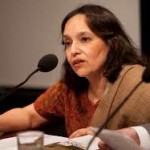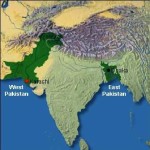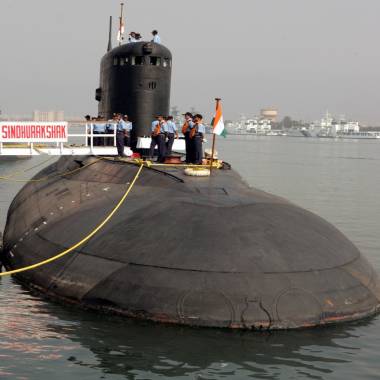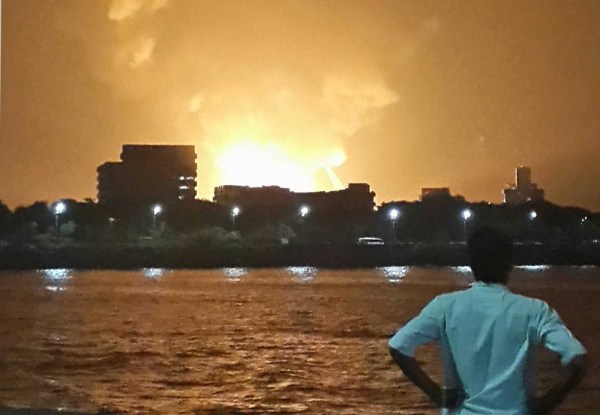.
.
.
.
.
.
.
.
.
.
.
.
.
.
.
.
.
.
.
.
.
.
.
Our Announcements
Sorry, but you are looking for something that isn't here.
Posted by admin in INDIA EXPOSED, INDIA FRAUD, INDIA IMAGE SPIN MASTERS, INDIA MACHINATIONS TO DESTROY CHINA, INDIA SPONSORED TERRORISM IN KARACHI, INDIA STATE SPONSORED TERRORISM IN PAKISTAN, INDIA TRAINED SUICIDE BOMBERS FROM AFGHANISTAN, India Training Suicide Bombers in FATA, INDIA'S CRIMES AGAINST HUMANITY, India's Guru Scam, INDIA'TREACHERY IN BANGLADESH 1971, INDIAN ARMY CHIEF-TOKENISM TO APPEASE SIKH MINORITY, INDIAN GOVTS LIES EXPOSED, INDIAN SABRE RATTLING BITS THE DUST, INDIAN SCAMMERS AROUND THE GLOBE, INDOPHILE NAWAZ SHARIF, INEPT INDIAN NAVY on April 22nd, 2014
Posted by admin in EAST PAKISTAN LIVES IN PAKISTANI'S HEARTS, India Destroys US Economy, INDIA EXPOSED, INDIA FRAUD, INDIA IMAGE SPIN MASTERS, INDIA MACHINATIONS TO DESTROY CHINA, INDIA: THE EVIL HINDU EMPIRE, INDIAN GOVTS LIES EXPOSED, INDIAN SABRE RATTLING BITS THE DUST, INDIAN SCAMMERS AROUND THE GLOBE on January 4th, 2014
 Media reported the hanging of Abdul Quader Molla in Bangladesh, a leading Jamaat-i-Islami leader; the first person to go to gallows for the alleged massacre of 1971. A leading newspaper reported, “Molla’s lawyers had protested the original order, saying the death penalty was awarded based on evidence given by only one prosecution witness, who had also earlier given two different versions of the same event… UN Human Rights Chief Navi Pillay wrote to Prime Minister Sheikh Hasina seeking a stay of the execution, saying the trial did not meet stringent international standards for the death penalty.” (12-12-2013)
Media reported the hanging of Abdul Quader Molla in Bangladesh, a leading Jamaat-i-Islami leader; the first person to go to gallows for the alleged massacre of 1971. A leading newspaper reported, “Molla’s lawyers had protested the original order, saying the death penalty was awarded based on evidence given by only one prosecution witness, who had also earlier given two different versions of the same event… UN Human Rights Chief Navi Pillay wrote to Prime Minister Sheikh Hasina seeking a stay of the execution, saying the trial did not meet stringent international standards for the death penalty.” (12-12-2013) By 3rd March 1971 a de facto Bangladesh Government was in place. It was after the March 1971 crackdown by the Pakistan Army in Dacca and later all over East Pakistan that the 6 battalions of East Bengal Regiment as well as the forces above cited deserted and went over to the Indian Army. Colonel [retired] Osmani; the first commanding Officer 1st East Bengal Regiment in 1952 and later been made the Commandant of East Bengal Regimental Centre at Chittagong having retired from Pakistan Army in 1966 organized, with the help of the Indian Army; a militant wing of Awami League in July 1970. It was he who led the march past of the militant Awami League on 23rd March 1971,in front of Shiekh Mujib’s house. On 17April 1971 the Acting President of the defacto Bangladesh Government made him the Commander in Chief of the ‘Bengal Liberation Army’ with a rank of a ‘General.’
By 3rd March 1971 a de facto Bangladesh Government was in place. It was after the March 1971 crackdown by the Pakistan Army in Dacca and later all over East Pakistan that the 6 battalions of East Bengal Regiment as well as the forces above cited deserted and went over to the Indian Army. Colonel [retired] Osmani; the first commanding Officer 1st East Bengal Regiment in 1952 and later been made the Commandant of East Bengal Regimental Centre at Chittagong having retired from Pakistan Army in 1966 organized, with the help of the Indian Army; a militant wing of Awami League in July 1970. It was he who led the march past of the militant Awami League on 23rd March 1971,in front of Shiekh Mujib’s house. On 17April 1971 the Acting President of the defacto Bangladesh Government made him the Commander in Chief of the ‘Bengal Liberation Army’ with a rank of a ‘General.’Posted by admin in Cult of Hinduism, Hindu India, HIndu Terrorism, INDIA EXPOSED, INDIA IMAGE SPIN MASTERS, INDIA MACHINATIONS TO DESTROY CHINA, INDIA' NUCLEAR DUDS, INDIA'S CASTEISM, India's Guru Scam, INDIA'S VIOLATION OF INDUS WATER TREATY, INDIA-AN EVIL NATION, INDIA-HO-- -- USE BUILT ON SAND AND COW DUNG, INDIA: THE EVIL HINDU EMPIRE, INDIAN GOVTS LIES EXPOSED, INDIAN SABRE RATTLING BITS THE DUST, INDIAN SCAMMERS AROUND THE GLOBE, INDIAN TERRORISM FROM CENTRAL ASIAN REPUBLICS, INDOPHILE NAWAZ SHARIF, MAKAAR HINDUS on December 10th, 2013
|
FILE – PTI PHOTO
Modi Beats Tendulkar, Mangalyaan on Facebook
BJP’s prime ministerial candidate Narendra Modi is the most talked about person on Facebook in India beating likes of cricketing legend Sachin Tendulkar and Apple iconic device iPhone 5s, the US-based social networking site said on Monday.
According to the social networking giant’s top Indian trends of 2013, RBI Governor Raghuram Rajan and India’s Mars mission also failed to beat the Gujarat chief minister, who was the most mentioned person on Facebook this year. Facebook, which at present claims to have 1.19 billion monthly active users (MAUs), has 82 million MAUs in India for the quarter ending June 31, 2013. “Take a look at the most mentioned people and events of 2013, which point to some of the most popular topics in India,” Facebook said in a statement. This includes Narendra Modi followed by Sachin Tendulkar, iPhone 5s, Raghuram Rajan and Mangalyaan, it added. Last month, India launched its maiden mission to Mars, which could carry India into a small club of nations, including the US, Europe, and Russia, whose probes have orbited or landed on Mars. Batting mastero Tendulkar also retired last month after playing his 200th-test match. He is also the first sportsperson to be bestowed with India’s highest civilian award, Bharat Ratna. “Today, we’re taking a look back at the people, moments and places that mattered most on Facebook in India in 2013,” the social networking site said. Conversations happening all over Facebook offer a unique snapshot of India and this year was no different. Every day, people post about topics and milestones important to them from announcing an engagement, to discussing breaking news or even celebrating a favourite political party’s victory or love for cricket, it added. Sukhdev Dabha at Murthal (Haryana) was the most talked about place to visit on Facebook followed by Golden Temple in Amritsar, Bangla Sahib Gurudwar, Connaught Place and India Gate in New Delhi and Taj Mahal in Agra among others. FILED ON: DEC 10, 2013 00:17 IST
|
Posted by admin in INDIA -US ENCIRCLEMENT OF CHINA, India -US Joint Export to Pakistan: Terrorism, INDIA EXPOSED, INDIA IMAGE SPIN MASTERS, INDIA MACHINATIONS TO DESTROY CHINA, India Secessionist Movements, India Splitting, India Sponsored Taliban Terrorism in Pakistan, INDIA SPONSORED TERRORISM IN KARACHI, INDIA STATE SPONSORED TERRORISM IN PAKISTAN, INDIA TRAINED SUICIDE BOMBERS FROM AFGHANISTAN, India Training Suicide Bombers in FATA, INDIA' NUCLEAR DUDS, INDIA: THE EVIL HINDU EMPIRE, INDIAN AGENT NAWAZ SHARIF:FREE ARY, INDIAN ARMY CHIEF-TOKENISM TO APPEASE SIKH MINORITY, INDIAN GOVTS LIES EXPOSED, INDIAN SABRE RATTLING BITS THE DUST, INDIAN SCAMMERS AROUND THE GLOBE, INDIAN TERRORISM FROM CENTRAL ASIAN REPUBLICS, INDOPHILE NAWAZ SHARIF on December 10th, 2013
Threat by Indian PM
By
Inam Khawaja
The Indian Prime Minister Dr. Manmohan Singh stated on 4, December 2013; “There is no scope of Pakistan winning any such war in my lifetime,” he told reporters in New Delhi, reported Press Trust of India. This statement was in response to Nawaz Sharif’s statement “Kashmir is a flashpoint and can trigger a fourth war between the two nuclear powers at anytime.”
Nawaz Sharif was only pointing out the facts. No one can deny that Kashmir dispute is not a flashpoint nor can one ignore the horrors of a nuclear war. In fact he has always been in favour of peace and improving relations with India; immediately after winning the elections in May he invited Manmohan Singh but was rebuffed.
 The history of negotiations between these two neighbours from 1947 to date clearly shows that they have been unable to improve the relations and solve any of the problems souring their relations. The basic impediment is the fact that the successive generations of Indians do not accept an independent Pakistan and continue to strive for “Akhand Bharat”. They don’t seem to tire of saying; “We are one”, “We have a common culture” and so on, totally ignoring the fact that Muslim literature, music, art, architecture, dress and cuisine are poles apart and has nothing in common with the Hindu literature (even the scripts are totally different) art, architecture, dress and cuisine are totally different even the method of serving food is different.
The history of negotiations between these two neighbours from 1947 to date clearly shows that they have been unable to improve the relations and solve any of the problems souring their relations. The basic impediment is the fact that the successive generations of Indians do not accept an independent Pakistan and continue to strive for “Akhand Bharat”. They don’t seem to tire of saying; “We are one”, “We have a common culture” and so on, totally ignoring the fact that Muslim literature, music, art, architecture, dress and cuisine are poles apart and has nothing in common with the Hindu literature (even the scripts are totally different) art, architecture, dress and cuisine are totally different even the method of serving food is different.
The Indian media continues to harp upon the same old theme. The fact is that the Indian leaders even after sixty six years consider the establishment of Pakistan a great tragedy. Jaswant Singh in his book states;
“There are some other to my mind, equally important aspects of this great tragedy of India’s Partition deserving our reflection. Did not this Partition of India, vivisecting the land and its people question the very identity of India itself.” (Page 6 & 7, Jinnah India-Partition Independence by Jaswant Singh, 2009)
For Jaswant Singh and almost all Indians even today the partition of British India was a mistake and a great tragedy. In fact the real tragedy is that Indians cannot seem to get out of this mindset of “Akhand Bharat”.
In December 2001 India mobilized bulk of their forces on Pakistan’s borders in Punjab, Rajasthan and Indian occupied Kashmir. After ten months of eye ball to eye ball confrontation Indians withdrew realising the danger of it developing in a nuclear war. As a result of the failure of this massive confrontation the Indian Army developed the Cold Start Doctrine and officially unveiled it on 28, April 2004 at the Army Commander’s Conference. Since then Indians have held over a dozen exercises to operationally debugthe doctrine. It may be noted that the Cold Start Doctrine is Pakistan specific.
In 2011the head quarters of their Strike Force and Rapid Force were shifted from Central India to Punjab a requirement of Cold Start Doctrine. Today over seventy percent of Indian Army and Air Force are mobilised against Pakistan.
Once again Pakistan has suggested the demilitarisation of Siachin. The effect of the military occupation of Siachin is having a very grave climatic effect on the glacier. It needs to be remembered that in 1984 India moved their forces in Siachin which until that time was unoccupied and in pristine condition. The majority of people in Pakistan are in favour of peace and demilitarisation of Siachin. We call upon the peace lovers and environmentalists in India to take up the cause of peace and saving the Siachin Glacier from the detrimental effect of military occupation.
Posted by Shahroz Bashir in INDIA-AN EVIL NATION, INDIAN SABRE RATTLING BITS THE DUST, INEPT INDIAN NAVY on August 17th, 2013
Video of the catastrophe shows a fireball engulfing the dock where the Indian navy submarine was berthed. Emergency crews are working to rescue the sailors, but military officials have not released the number of sailors that may be trapped in the vessel.
MUMBAI – Eighteen Indian sailors were trapped and some were killed after an explosion and fire on a diesel-powered submarine berthed at a base in Mumbai on Wednesday.
Defense Minister A.K. Antony said crew members inside the Russian-built INS Sindhurakshak had died. He gave no details.
The explosion just after midnight was likely an accident, but an investigation was under way to establish the cause, the navy said.
“There are some people who are trapped on board, we are in the process of trying to rescue them,” navy spokesman P.V.S. Satish said. “We will not give up until we get to them.”

Kamal Kishore / Reuters
The Russian-built INS Sindhurakshak is seen here in 2006.
The incident raised memories of the explosion on the Russian nuclear attack submarine Kursk which sank to the bottom of the Barents Sea in 2000, killing all 118 crew members.
The Indian vessel, which returned from an upgrade in Russia earlier this year, had suffered a similar accident in 2010 in which one sailor was killed while it was docked in the southern port of Visakhapatnam.
Typically, such a submarine is fitted with torpedoes and missiles. Torpedoes are launched underwater to attack other submarines while missiles are used for long ranges above water. There was no immediate word on the status of the weapons on board the Sindhurakshak.
“Lot of things are in very close proximity, there is fuel, there is hydrogen, there is oxygen, there are weapons with high explosives on board,” said retired Indian navy chief Arun Prakash.
“So a slightest mistake or slightest accident can trigger off a huge accident. The question of sabotage – I mean, all possibilities have to be considered – but sabotage is probably the last possibility.”
Three people who were near the submarine at the time of the explosion were injured and being treated in hospital, spokesman Satish said.

Vikalp Shah / Reuters
Flames from the INS Sindhurakshak burn in Mumbai, India, late on Wednesday.